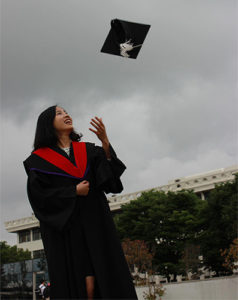Dr. SOEURN Visal
CHHEM Rethy*, MD, PhD (Edu), PhD (His), CHHEM Sirika**, PharmD, and VENTO Sandro***, MD
One Health Approach to Global Pandemics, AVI, 12th April, No 10
In late December of 2019, the outbreak of COVID-19 struck China, before spreading like wildfire to more than a hundred countries – making it the largest pandemic of the 21st century. Regardless of their levels of economic development, all nations were unprepared and overwhelmed by the disaster. In a 2015 TEDTalk, Bill Gates, concerned about the increased frequency of infectious diseases over the past 25 years, called on the world to pay attention and prepare for pandemic’s inevitable appearance. Experts attribute the rise in infectious diseases to the increasing globalisation, economic trends such as rapid urbanisation, high frequency of global travel and increased human consumption of meats. This ordeal, and the likelihood of future pandemics, calls for a systematic and comprehensive preparedness and response programme, at both the national and global levels.
In this paper we consider the potential of the “One Health” approach, as a model to mitigate future emerging infectious diseases. Coronaviruses jump from one species to another, from bats and civets (SARS), to dromedary camels (MERS). Their transmission is facilitated by the loss of natural habitats, global migration and exposure to new hosts, leading to serious pandemics.
Pandemics in ancient times were attributed to the wrath of gods. By the end of 19th century, the establishment of “Germ Theory” by Louis Pasteur provided solid evidence for the discovery of the rabies vaccine. Robert Koch developed the concept of infectious disease ecology that shed a new light on human and animal health. Rudolf Virchow developed the concept of zoonosis to explain the transmission of diseases from animals to humans. Based on these new concepts, William Osler was said to coin the term “One Medicine”, establishing a link between human and animal health. Later, Calvin Schwabe further developed the paradigm of “One Medicine” by recognising the role of animals interacting with humans. The One Health approach, co-developed by physicians and veterinarians, acknowledges the interdependence between human, animal and environmental health.
COVID-19 and its family of Coronaviruses are a One Health issue. Genetic studies of Coronaviruses show a close genetic identity with the Betacoronavirus, associated with bats.
These viruses have caused severe outbreaks of SARS (2003), MERS (2012) and the current COVID-19. The disturbance of wildlife habitats or the contact of an animal reservoir (bat, pangolin, or another wild animal) with a human, can sometimes trigger an emerging infectious disease outbreak. Bat species occupy habitats that span across large geographical areas. Their great diversity and co-evolution with viruses enable them to cross between species, infecting large human populations as demonstrated by SARS, MERS and COVID-19. Recent studies of bats in Cambodia and Laos at the interface of human populations show that 4.7% of these bat species carry the Alphacoronavirus and Betacoronavirus, with the latter known to be highly pathogenic to humans. With rapid urbanisation and industrialisation, some major public works may encroach on the habitat of bats and expose them to neighbouring human settlements. On the other hand, the use of wild animals as food or medicine may also contribute to cross-species viral infections, from animal reservoirs to humans.
The FAO-OIE-WHO (Food and Agriculture Organisation – World Organisation for Animal Health – World Health Organisation) tripartite agreement gave way to a cooperation that will address global health risks at the human-animal-ecosystem interface. The three partners will collaboratively contribute to the establishment of standards, norms and programmes to achieve the One Health goals. Nevertheless, the One Health approach faced many challenges in its complex operationalisation, and calls for quality stewardship, which refers to the formal and informal “rules that distribute authorities, roles and responsibilities among societal actors and shape the principal‐agent interactions among them”. Stewardship should look beyond just the establishment of policies, strategies and action plans at the national and subnational levels, in order to mitigate a pandemic. Leaders and managers should also engage international development partners, academia, the private sector, non-governmental organisations and the civil society.
Given the massive infrastructure development, rapid urbanisation and change of lifestyle, future economic development in Cambodia may pose a threat to its rich biodiversity and disrupt the natural habitat of bats, unknowingly unleashing colonies of viruses from their wild reservoirs into human settlements. This phenomenon, seen increasingly in countries around the world now, carries the very real risk of cross-species “transmission” that would lead to a situation in which we are dealing with uncontrollable emerging infectious diseases.
This threat to human life calls for a double government intervention. Firstly, a solid legal framework with regulations to protect the biodiversity, should the former be established. Secondly, a pandemic emergency response team should be created. This team would aim to fight Coronaviruses outbreaks through a comprehensive and integrated system, with the One Health approach as its strategic model. And last but not least, there is a need for strong and sustained political commitment to provide inspiring leadership along with proper stewardship, to manage this alarming number of increasing pandemics.














